Representation
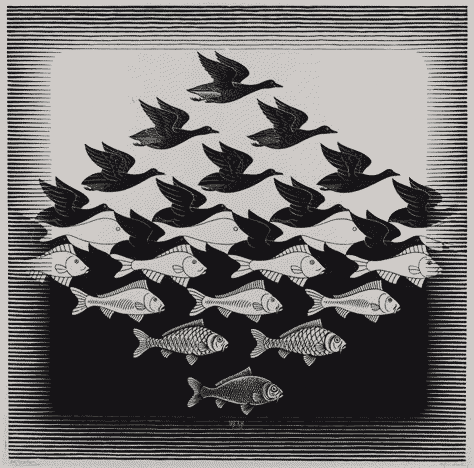
Log Entries
19.10.2025 // What is Art?
Cape Town, South Africa ⬔
Lately, I have been thinking that, while good art often uncovers what is hidden, allowing us to see lucidly across large spans of time and space, the short-form clips of our age seem to instead obscure our sight.
Take, for instance, the "tradwife" trend on TikTok and Instagram. There is perhaps no more powerful antidote to the digital mirage of seemingly young, healthy, and manicured women endlessly showing off pampered babies and sponsored cleaning products, than the short story collection I recently finished reading. In Banu Mushtaq's Heart Lamp, a young housewife cries out to her husband (and to us all): "Others are not even married at my age. But I am already an old woman [...] My back is broken. These children, the home, samsara—do I have even a minute of free time? If I bear one child per year, what will I become? Don't you want me to live long enough to be a mother to these children at least?"
- Andrea
20.06.2025 // Filesystems are Composable Interfaces
Bath, England ⬔
As a programmer, I have had numerous epiphanies that seem so obvious in hindsight. One such realisation came as I was exploring user-space file systems. Any system that exposes simple file formats allows for a large variety of preexisting programs to interface with it. If you expose your data as CSVs then Excel, Google Sheets, Numbers, and Libreoffice are able to open and make all kinds of modifications, calculations, etc.
Arriving at this basic premise doesn't require too much effort, but what is less explored and, perhaps, less obvious is that it is possible expose different "views" of data so that different programs can understand and interact with the data. I've been investigating this with my new program caldavfs (still WIP). I started writing caldavfs because I wanted a way to sync my custom notes between different devices and be able to view and open these notes easily on my phone. Since iCalendar supports VJOURNAL, I thought it'd be cool to expose files that I can write in my regular text editor, and have those be saved afterward as VJOURNAL files that I sync with my caldav server.
Typically an iCalendar file has the following format:
BEGIN:VJOURNAL
UID:19970901T130000Z-123405@host.com
DTSTAMP:19970901T1300Z
DTSTART;VALUE=DATE:19970317
SUMMARY:Staff meeting minutes
DESCRIPTION:1. Staff meeting: Participants include Joe\, Lisa
and Bob. Aurora project plans were reviewed. There is currently
no budget reserves for this project. Lisa will escalate to
management. Next meeting on Tuesday.\n
2. Telephone Conference: ABC Corp. sales representative called
to discuss new printer. Promised to get us a demo by Friday.\n
3. Henry Miller (Handsoff Insurance): Car was totaled by tree.
Is looking into a loaner car. 654-2323 (tel).
END:VJOURNAL
And so what caldavfs essentially does is take those files and build a view of them that is easier to edit and write, allowing you to use your tool of choice when engaging with the files.
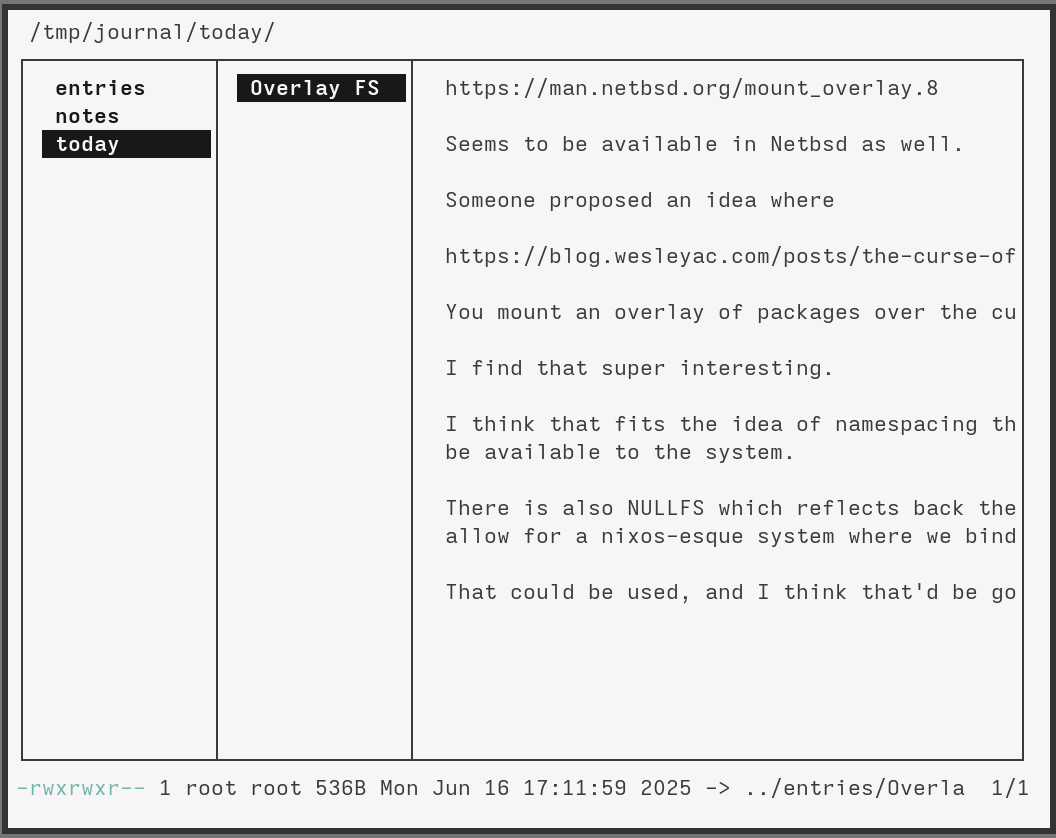
What I realize, then, is that files are essentially a protocol, almost like REST, that expose an interface that contains methods, such as: read, write, stat, readdir, etc. Applications that work with files call those methods to perform operations. This is very similar to a message-passing system with late-binding similar to Smalltalk. While drafting out this entry, I did a quick search and found that, naturally, I am not the first one to have made this observation.
The paper also highlights another challenge that I perceived: when you try to fit a file-like interface everywhere, cases arise where the abstraction breaks and become confusing. For example, what does it mean to cp -r a process tree? Does it create a snapshot? What operations are supported?
It's a challenge I faced with caldavfs. It works great as I am able to create notes using any editor I want, and I can use rm, cp etc., to make modifications. At the same time, files do not necessarily map cleanly onto iCalendar format. For example: directories don't exist in ical, summaries are not unique but file names are. Then, there are a lot of cool features that are tougher to represent with files: note linking, categories, event types, etc. How should those be represented? It is not obvious.
This seems to be the Achilles' heel of composable systems, these abstractions become loose and open to interpretation. Files are great, but maybe not the best foundation. Maybe abstractions from Functional programming would be better? Maybe lenses should be the universal interface?
- Marc
23.05.2025 // The Comma Directory Restructuring
Bath, England ⬔
I've meant to write (and I always mean to write) about our arrival to Bath—which has been truly revitalizing and has offered some harmonious continuity to our time in Devon and Selgars Mill.
However, I have been occupied in the pruning and clipping of previous Comma Directory entries that, over time, seem to have grown unwieldy, outgrowing the categories and sub-categories we have plotted them into. It has taken me some time, and it has got me thinking.
Curatorship is a topic that has long interested me, and it has become more and more pertinent in navigating the complexities we encounter—growing complexities—many would say, as the world grows more and more complex with AI, a changing climate, the threat of war. But I would say, instead, that complexity was already here all along. It could been found in the simplicity of a leaf that photosynthesizes or the star that twinkles in the night sky.
Hence, there is a "primal" need to curate, or categorize, or simplify. These actions are not strictly synonymous, but tightly bound to each other. I think, at least.
The issue with trying to place an infinitely complex experience of existence into neat categories has long been discussed within science, philosophy, technology, art. Our representations of the world are limited, and that is precisely why they are meaningful. By placing limits, which is to say prioritizing some facets of existence over others, we voice a point of view. This is why diversity of representations is so important—but it doesn't mean that limits themselves are "bad." Without limits, without the brain's ability to curate the complexity of each passing moment, decision-making, survival, meaningful and directed action would all perhaps be impossible. It is known, after all, that the "infinite" choice of streaming platforms, food delivery, and dating apps can often be debilitating and paralyzing. As can be the "infinite" flow of news and social media posts.
And these choice-laden systems do not even begin to approach the true complexity of how our planetary systems operate, not to say the universe.
All of this to say, I have been toying around with The Comma Directory's Concepts, Media, and Travel pages. I have been questioning whether having a "Design" category is too broad, and what the difference between design and other creative practices is. And, should sub-categories be included into multiple categories or restricted to a single one? It might not help that lately Marc has been reading the book, What Design Can’t Do: Essays on Design and Disillusion.
Ultimately, what are these categories for? Which in the end is the same as asking: what is The Comma Directory for? Developing a system for categorizing main ideas and themes is at the heart of our founding concept. It is a work in progress, and in a sense, it always will be. The categories will always overlap in some ways that are perhaps uncomfortable, and maybe there will also be some gaps that are hard to fill. Imprecisions.
I can imagine that many may consider that AI is particularly well-suited for this task, with its powered up pattern-recognition. Feed it the texts and have it spit out a systematization that, with the right prompting, could be "better" than anything that we can produce manually. Less time consuming, too. Why not? Maybe, while it is at it, it can also generate the entries and the images.
If making "sense" of the everyday complexities that bombard us is one of the most important functions of our brains, if our ability to make purposeful decisions has to do with our brain's ability to curate, to pick and choose, to categorize and, therefore, judge—then the work we do manually at The Comma Directory is profoundly rooted in what it means to think. In our vibes-bent era peopled with all sorts of energies and traumas, "feeling" feels much more fashionable than "thinking." And while I find modern, postmodern, and contemporary critiques of rationality to be very important, I echo Camus in saying that, while I acknowledge the many limitations of "reasoning", I do not deny "reasoning" in it of itself. And I do not want to automate away the very mental processes that constitute reasoning, and which I perceive to be very closely linked to my own agency and liberty. Not to say that intuition and feeling do not play an essential role, a role that is perhaps more closely tied to reasoning than traditional dualist conceptions of thought allow.
Ultimately, when I sit down to edit, reorganize, redefine, and recategorize, it is almost like I can feel changes starting to blossom from within, in real time, as I focus and tinker with our little website. I feel new questions begin to emerge, ideas begin to form, old ideas begin to transform. Maybe that is also why this entry is growing so much more longer than I anticipated.
There is a pleasure too that comes with all this thinking, of feeling yourself being transformed by interacting with a challenge and all the difficult questions it brings with, even when you do not fully succeed (which is often the case). The pleasure I derive from the curation and restructuring of The Comma Directory is also akin to the pleasure of moving to a new home, finding the nooks and crannies in which different little aspects of life can fit into. Here, the washing, there, the books. It is as much the art of adjusting the space to our lives as our lives to the space. Which is why it has been very fitting to work on The Comma Directory's categorization system at the same time as we have been settling into Bath and creating our short-term home here.
So, what's changed on here? New sub-categories have appeared, emerging from nearly a year's worth of writing and living, which is exactly what we hoped for from the start. I have also re-arranged some major categories within Concepts. For example, "Writing" has become "Creation", to cover a broader range of creative acts that we engage with. Thanks to Marc, each entry has its own page now, and can be accessed via the little square next to the location. Within media, there is some restructuring ongoing related to each "media" type. While we started with just "Books" and "Film", now we have "Articles & Essays", "Lectures", and "Websites". I am working on new ways of displaying a growing list of favorites, and hopefully implement a Reading Journal and a Film Journal. The new "Reviews" sections will include scattered thoughts on the different media types, rather than reviews in the strict sense of the word. I feel joyful about what The Comma Directory has grown into so far, and what it can grow to be with some continued care and attention.
- Andrea
08.02.2025 // A Hiatus: Through the Wormhole
Villecien, France ⬔
It snuck up on me, on both of us, as the days grew chillier and darker—in a way that had seemed unimaginable in the heat and brightness of September. We were, after all, in the very heart of the Mediterranean. White rock, bright sand, the big blue sea.
Now, it is the misty grey grounds and the muddy forest paths of the Château du Feÿ that surround us. How can it be?
But I know exactly how we got here. I did the bookings myself. All it took was a flight, too many trains to count, a few border crossings, a Swedish Christmas, a night in Germany, Paris.
And yet, returning to Comma Directory after two months of travels, holidays, and the flu (again), it feels as if I had just stepped away from my computer for a moment. Pistacho has run off, wagging his tail, to fetch a big stick, I have wrapped myself in a shawl, the water is boiling in a kitchen in Paramytha. And suddenly, I am in France and the grey day is quickly and quietly coming to an end behind the bare black branches of the forest. And then, it is as if Cyprus, Limassol, Paramytha had all just been part of some faraway dream.
- Andrea
24.11.2024 // Paphos!
Paramytha, Cyprus ⬔
Yesterday, we drove to Paphos to visit of the Tombs of the Kings, a major archaeological site and necropolis for the wealthy and powerful of the late BCs.
From the distance, we could see the white-washed city sprawling along the blue Mediterranean coast. Smaller than Limassol, but also hillier, I discovered Paphos as a place of contradictions.
Angular buildings from the 90s or early 2000s dot the long coastline. Here and there, there were some more contemporary structures mixed in. Elevators connect the lower part of the city, which we quickly discovered was all resorts and holiday rentals, with the old town that was constructed up on the hills.
A cross between charming and desolate, the old town managed to be a sort of lively ghost town. We stopped by a taverna that was full of people and live music, but the neighboring streets still felt hollow and empty, somehow. Freshly painted shops looked as if they were just about to open for the first time, while right next door the other buildings appeared to be crumbling. The minaret of a grey-stoned mosque nearby rose into the sky.
On the big roads, we witnessed cars fighting for space around rotundas, and it seemed suddenly like that’s where everyone was (if not in a taverna): in their cars, going somewhere.
From a first glance, it would be impossible to guess that this all lies on top of porous limestone and monumental ancient ruins.
The huge stone cut niches and temples we visited at the Tombs of the Kings were once filled with precious Hellenistic or Ptolemaic sarcophagi and treasure. Now, they house pigeons, native to this region, along with the recently arrived Asian hornets. The empty tombs house a damp and dusty darkness too, it’s an emptiness that feels dense. Uncanny in its weight.
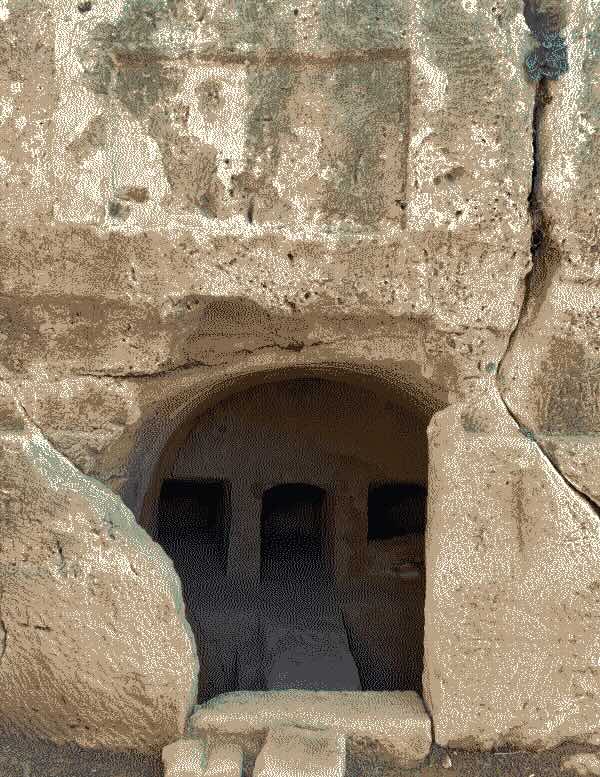
What fascinates me the most about visiting archaeological sites is how the experience deconstructs a sense of normalcy; something that can also happen with intellectual discoveries. I have experienced this first-hand in the classroom, while studying history, astronomy, or literature. But at a site, the deconstructiong of normalcy happens in a very physical way. Suddenly, I am standing at the edge of this hole in the ground, and I see doric columns below me, rising up as if holding up the rock and ground that I stand on.
To borrow a cliché, my perspective is shifted, literally. The usual rules of the game, on how to interact with a building or a space, are challenged. As much as the exposure to different narratives through books and film and conversations serves to challenge our preconceptions, there is something about movement—moving through a space and experiencing distances, heights, and depths differently—that hits home. It’s a very visceral reminder of the vastness of pretty much everything: the planet, history, culture, microbiology, outer space, which is fun to encounter on a “small” island like Cyprus.
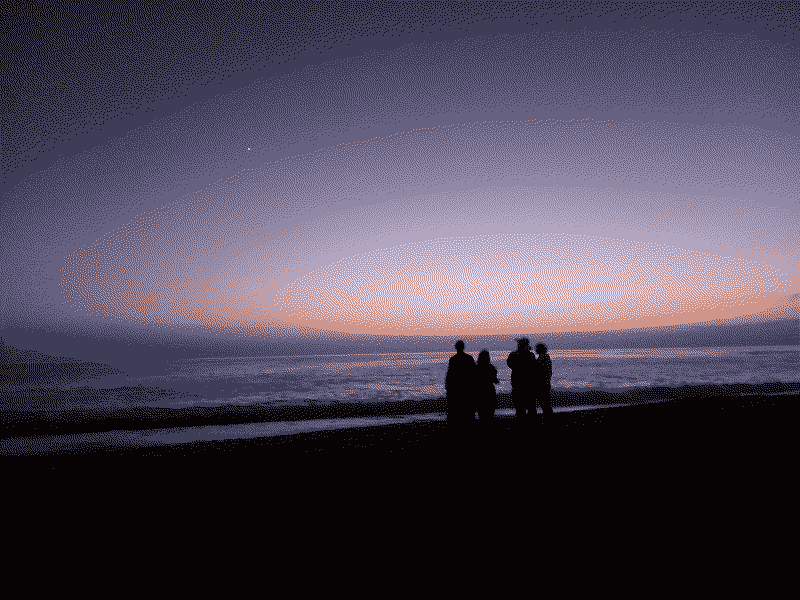
Ever since I took a history class on Salsa music and dance a few years back, I’ve been noticing how the concept of “embodiment” pops up from time to time. And if I really think about it, I had already begun to think about "embodiment" after my undergraduate capstone course on Cervantes' short stories, which feature some interesting body-centered themes.
This has been significant to me because I grew up very "mind" centered. It's interesting to think very deliberatively about what it means to be "in" a body or to be a body, especially in thinking about how movement can be an act of knowledge-making or knowledge-sharing (something we usually associate exclusively with "the mind"). And what about storytelling? I also find it interesting how controlling movement can be a powerful tool in the hands of authorities, and how encouraging certain types of movements can also foster collective myths—thinking of Youth Groups in Nazi Germany or cults that have their members do physical labor or specific types of sport. And well, there is a reason that "movement" is also used to describe social, cultural, political changes like the labor or the feminist movements.
Moving around Cyprus has been very interesting (especially without owning a car). And this visit to Paphos has definitely been a highlight of my time here. It has given me a lot to think about.
We concluded our latest mini-trip, daylight fading fast, at a curving pebbly beach, which myths tell is the birthplace of Aphrodite.
- Andrea
29.10.2024 // Personal Tools
Paramytha, Cyprus ⬔
Recently, I finished up Donald Norman's An Invisible Computer. It's a fantastic book, probably one of my favorite books, and it starts off with a powerful quote:
"The personal computer is perhaps the most frustrating technology ever. The computer should be thought of as infrastructure. It should be quiet, invisible, unobtrusive, but it is too visible, too demanding. It controls our destiny. Its complexities and frustrations are largely due to the attempt to cram far too many functions into a single box that sits on the desktop. The business model of the computer industry is structured in such a way that it must produce new products every six to twelve months, products that are faster, more powerful, and with more features than the current ones."
As much as I like the book, however, there is one important concept that I disagree with. Norman titles and concludes the book with this idea: that technology should be completely invisible. By invisible, he means that technology should blend so seamlessly into our everyday life that we do not notice it is there.
"[.. talking about the goal of technology] The end result, hiding the computer, hiding the technology, so that it disappears from sight, disappears from consciousness, letting us concentrate upon our activities, upon learning, doing our jobs, and enjoying ourselves."
Sounds great in theory, in practice of course what we find is that companies make something that is easy to use, and then do not necessarily act in the users' best interest, but the user is stuck with what the company provided and is neither empowered to seek out other options nor fix it. I think this is an anti-pattern, and I talk about this in depth in my essay, The Curse of Convenience.
However, there is also another section that I found particularly interesting and shines a light on the direction where I think technology should go, which is Norman's idea about what makes a good tool. Norman has this to say:
"Good tools are always pleasurable ones, ones that the owners take pride in owning, in caring for, and in using. In the good old days of mechanical devices, a craftperson's tools had these properties. They were crafted with care, owned and used with pride. Often, the tools were passed down from generation to generation. Each new tool benefited from a tradition of experience with the previous ones so, through the years, there was steady improvement."
I do not feel like modern phones and computers are like this kind of tool. A good retro camera is something we learn inside out, with its quirks and unique abilities, and becomes part of our craft and personality. This is not so much the case with a modern iPhone. Modern technology removes as much personalization as possible and makes it hard to repair for the sake of convenience, looks and ease-of-use. That means that you do not put effort into truly knowing your tool nor personalizing it, and so as a result, do not appreciate it as much. Instead of customizing and learning about your unique device, you buy a new one, that acts just like the old one. Devices become impersonal and invisible.
In a recent interview, Norman laments the fact that his all time best-seller, Design of Everyday Things, did not cover that tools should be designed to be repairable too. To me, repairability is in opposition to his idea of technology becoming invisible. At the same time, I think repairability and customization go hand in hand with his idea that you should feel pride in owning a tool, and that that is what makes a good tool. A device that you tweak and make truly your own, you will care for more and want to repair as well. As I replace parts of my Thinkpad and change the way it looks and feels, I find it becomes more personal to me.
- Marc
30.09.2024 // War and Words
Lofou, Cyprus ⬔
Today we are in Lofou, a small village located 20 minutes north of Paramytha. It is another dreamy place that has preserved its beautiful stone architecture. In the café-restaurant that we sit at, a calm and cool atmosphere gives peace. We are surrounded by books, ceramics, dried plants, wood, art, the blue sky, and a green garden.
I have Javier Darío Restrepo’s Pensamientos: Discursos de ética y periodismo with me, which I read from a beautifully and simply designed armchair. Pensamientos reminds me of home. Life feels joyful.
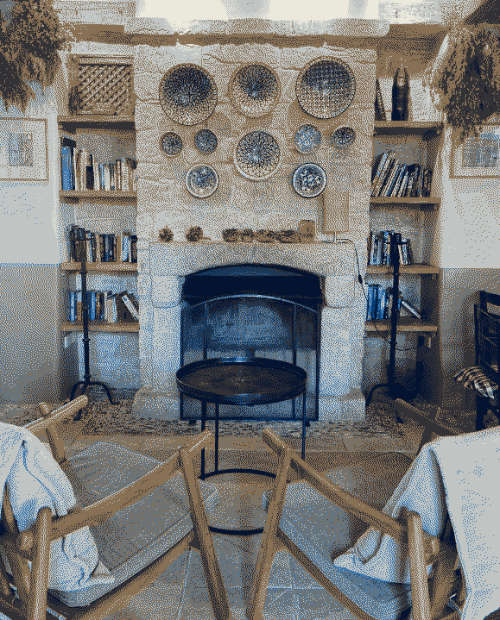
And yet, whenever I pull up a map, I am reminded that we are now just off the coast of Lebanon. Perhaps an hour-long flight from Gaza. If I zoom out, I notice that we are on the same longitude as Ukraine, we share the same time zone.
I was born surrounded by violence. In Bogotá, you are always on your guard, even if the city is safer now than what it used to be, and a whole lot safer than what other parts of Colombia are still like today. Being here now, in this idyllic village, the contrast feels stark.
During a brief period in my early adulthood, (outright) war between nations went from feeling unthinkable to almost inevitable. I know this isn’t true, violence and injustice have been and continue to be ever-present. The turn of the century was incredibly bloody for Colombia with the "war on drugs." But it does feel that now there has been a broader mental shift: that before war and violence were somehow more unacceptable globally, and so different actors undertook violence in slyer and stealthier ways. Political discourse around military attacks and violent action was not so forthright. Some people may say, as has been said about Trump, “at least they’re being honest now, showing their true colors.”
However, I disagree. I think that the fact that a full-scale war was “unthinkable” for many people was a good thing. The fact that we have mental red lines is important, even if humanity does not always live up to these standards. To me, the goal should be to denounce and expose the ways governments, businesses, and individuals get around what is deemed just or right, and the ways in which hypocracy takes shape. We should hold leaders accountable for lofty speech promoting peace and tolerance, make them meet the standard, instead of giving in and making war and violence an “acceptable” and “inevitable” part of our everyday in the name of "honesty."
For a long time, I’ve felt a natural pull towards pacifism. However, I understood well the people who critiqued it, we need to defend ourselves from those who commit harm after all, don’t we? We need to be able to fight back, right? What’s the alternative?
While I don’t have any answers, I have realized I need to listen to that instinct that protests against violence, conflict, and war. It is an instinct that has been coupled with a life-long interest in literature and art that expresses and describes the ravages of systematized violence: from Primo Levi, Tim O’Brien and Harper Lee to Maryse Condé, Alain Resnais, and Isabel Allende. It was first the memoirs from Holocaust survivors followed by the accounts of the military dictatorships in South America and then the testimony of the brutality of slavery in the Caribbean that have over time constructed my conviction in justice, freedom, and accountability, but also at the same time, for nunca más.
“Never again” is always associated with World War II, but in Colombia, never again continues to be called for even as Colombians continue to suffer and die every day due to ongoing violence. Our “armed conflict” is unique in the way that the categories of victims and victimizer are not always so neatly separated. It is as the writer Rodolfo Celis Serrano describes in his autobiographic short text on life in the Usme neighborhood of Bogotá: there are things that he did while living under the threat of violence that still bring him shame and guilt. Celis was displaced from his home, a victim of the armed groups that took over the territory, and yet he himself complicates the category of “victim” by highlighting his own guilt. In Colombia, we have to reckon with reintegrating combatants and civilians of all types into peaceful communal living, while at the same time trying to balance this with the pursuit of justice and accountability.
And there are so many Colombian thinkers, artists, and activists that have been working through the inherent paradoxes of prolonged systemic violence for years.
One of them was Javier Darío Restrepo, who I am currently reading. For my next log entry, I want to reflect on Restrepo’s writing along with the work of Jean Giono, another author who I also read and rediscovered this month.
Their writing has given me much to think about what peace means, as real action and not just a “utopian” concept. In their writing, I’ve found that same visceral rejection to war and violence that I feel—that war is senseless at its core, even with all the justifications that we try to dress it up with. In their writing, I’ve also confirmed that this rejection of war does not entail sacrificing strong convictions about rights and wrongs, it doesn’t equal apathy or “neutrality” in the face of cruelty, injustice, and inhumanity.
“El carácter del conflicto, su prolongación en el tiempo, la complejidad y multitud de los elementos en juego, el constante juego de la desinformación—que no es accidental sino parte de la táctica guerrera—, crean una atmósfera de confusión tal que la gente muere todos los días sin saber por qué muere”. – Javier Darío Restrepo, Pensamientos (p. 221)
« Il faut sinon se moquer, en tout cas se méfier des bâtisseurs d’avenir. Surtout quand pour battre l’avenir des hommes à naître, ils ont besoin de faire mourir des hommes vivants. » – Jean Giono, Refus d’obéissance (p. 14)
- Andrea
22.09.2024 // Chautauqua
Paramytha, Cyprus ⬔
Currently, I am reading the book Zen and the Art of Motorcycle Maintenance, and it is divided into several Chautauquas. Chautauquas began as part of a social movement during mid-20s America and they consisted of educational events full of "entertaining lectures, performances and/or concerts". The story of Zen And The Art Of Motorcycle Maintenance uses this concept to deliver philosophical insights in a way that is more entertaining to the reader, and uses, as you might guess, motorcycle maintenance to talk about what is the meaning of quality and why quality matters.
- Marc
07.09.2024 // Great Software is Simple on Many Planes of Abstraction
Bogotá, Colombia ⬔
There is a dichotomy in software development, high-level and low-level software. This is particularly true for programming languages, where you have low-level languages that give you more control, but require more understanding of how computers work, and high-level languages that allow you to express your ideas more simply and allow you to not think about low-level details.
High-level software is called that because it operates at higher levels of abstractions. This means that it obscures the machinery of what happens within a computer (the "low-level"), so that we can focus on the task at hand. For example, we would not want to think about how a web browser forms a TCP/IP connection, communicates with a DNS server, etc., when opening a web page—at least, we do not want to up until the point where we encounter an error.
High-level software unlocks the ability for us to perform more advanced tasks quicker with less mental overhead. It can also unlock a great deal of improved security, as it can restrict certain operations from the user and better adapt to their needs, which, even if it deprives users of some liberty, can still be desirable.
However, when we only focus on building a good high-level experience, it comes at the expense of low-level control that becomes inaccessible or too complex for regular users. This invites us to be inefficient and construct false understandings. Without a deep understanding of our systems, we cannot meaningfully fix the system nor optimize it. It invites us to outsource this control to experts, who are often restricted to building general solutions for many use-cases. Poor understanding often leads to rebuilding the same solutions over and over again, with the solutions becoming even more complex and inefficient each time. When only experts understand systems, it centralizes knowledge and power away from the general population.
I explored the democratic problems it leads to in my essay The Curse of Convenience.
Low-level tools give us greater control and greater freedom. Understanding the lower-level units makes it easier for us to understand how everything fits together, and gives us the power to make the changes we wish. However, using only low-level tools makes it more difficult to cleanly express ideas and it can be a frustrating experience. It sometimes requires digging through manuals and the time it takes to accomplish tasks becomes much longer. It is also easier to make mistakes.
This dilemma leads me to solutions that attempt to be simple on many planes of abstractions. In programming languages such as Go and OCaml, the high-level semantics are simple, but a user can still also understand the lower-level details of what happens, which makes it possible to operate at a lower-level when necessary without being an expert. In software, Unix utilities find the balance of being simple and allowing users to express high-level ideas. Older motorcycles are easy to operate, and also easy to fix when necessary.
- Marc
04.09.2024 // Building Software is like Building a House
Bogotá, Colombia ⬔
Common startup-mentality is to move fast and break things. Books like Lean Startup also posits that startups should build "MVPs", which is an incomplete version of the product that allows you to test it on real users so that you can iterate on it.
All the talk is about being cheap and fast, which I do think is important for a startup. However, I also think people get it wrong, because while it is good to be lean, the product should not be buggy, wasteful or low quality.
I think of software as similar to building a house. The fastest way to get a house up is building a house with poor foundations, using the cheapest brick with prebuilt modules. But, it is also unlikely that anyone would want to live in such a house.
If, instead, we were to invest in quality, even if it means to build only a small section at the time; I believe the end result would be better and the feedback received along the way will also be more useful. So, when coding let's make sure that the code is good. Let's not neglect testing, but perhaps with a more limited scope. Let's take the time to think about the visuals and the energy efficiency of the solution, because neglecting this affects the quality of the entire product, and energy efficiency is a social responsibility we all bear.
I also think of writing code akin to maintaining a house. If your code is bad and smelly, it is like working in a kitchen that has not been cleaned for months with dirty dishes piled up in a sink. It is not a place where you want to work in, or inhabit.
- Marc
23.08.2024 // Projecting Log Entries
Bogotá, Colombia ⬔
Comma Directory tries to set up a way to separate "the facts" from the interpretation of the facts. The idea is to build up a set of log entries that over time can be projected to display a unique interpretation of a given concept.
Originally inspired by event-sourced programming, this idea also has a certain resemblance to the zettelkasten method. In zettelkasten, you build up a set of atomic notes, that you then piece together to construct a novel idea.
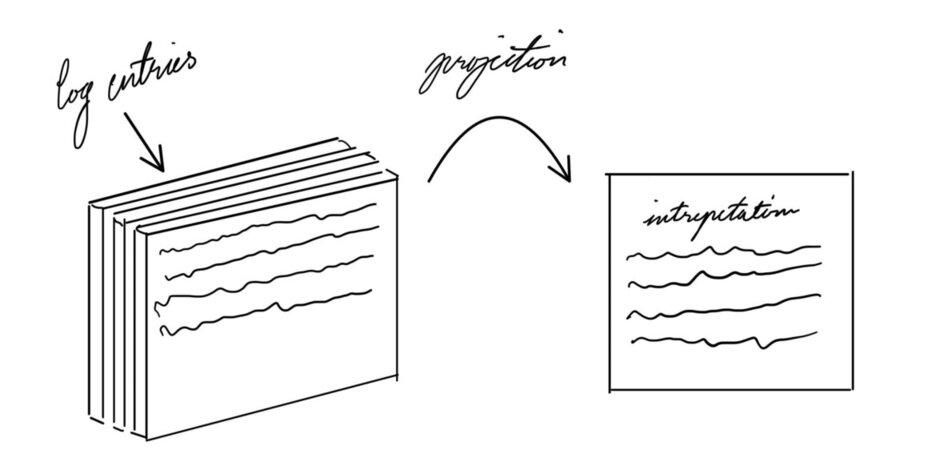
This process allows us to improve our understanding of our own thoughts and make sure that important ideas are grounded in a solid foundation. And if we get it wrong, we are able to reinterpret the information, without losing the raw source.
- Marc
19.08.2024 // The Comma Directory Structure
Bogotá, Colombia ⬔

Comma.directory will be built over time by composing together many small log entries. Each log entry contains observations, events, and thoughts that we label.These log entries will be the building blocks for a directory of concepts, which we will categorize for easier navigation.
When entering the page of a concept through the directory, the log entries that led up to the idea would show up and and, if the idea feels more fully explored, it might also contain a summary or conclusion.
- Marc